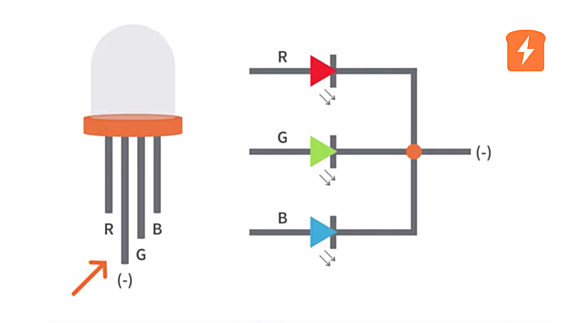CircuitBread Practicals: LEDs
The article comprehensively compares LEDs with incandescent bulbs, fluorescent lamps, and gas ...
The article comprehensively compares LEDs with incandescent bulbs, fluorescent lamps, and gas discharge lights, and highlights why LEDs are a better ...
The article comprehensively compares LEDs with incandescent bulbs, fluorescent lamps, and gas discharge lights, and highlights why LEDs are a better choice.
This article outlines the importance of choosing the right resistor for an LED. It starts by ...
This article outlines the importance of choosing the right resistor for an LED. It starts by explaining LED Forward Voltage, touches on the Max ...
This article outlines the importance of choosing the right resistor for an LED. It starts by explaining LED Forward Voltage, touches on the Max Current, and puts Ohm's Law into ...
Deepen your understanding of LEDs as explained by an Electrical Engineer. Discover how LEDs ...
Deepen your understanding of LEDs as explained by an Electrical Engineer. Discover how LEDs work, their level of efficiency, and the superior ...
Deepen your understanding of LEDs as explained by an Electrical Engineer. Discover how LEDs work, their level of efficiency, and the superior technology behind them.
In this tutorial, we’re going to discuss about the functionality of an RGB LEDs , its types ...
In this tutorial, we’re going to discuss about the functionality of an RGB LEDs , its types and structures, and how their color can be configured ...
In this tutorial, we’re going to discuss about the functionality of an RGB LEDs , its types and structures, and how their color can be configured with a demo using Arduino Uno.
In this part of LED Questions Answered, an electrical engineer provides an insightful ...
In this part of LED Questions Answered, an electrical engineer provides an insightful comparison of LEDs and HIDs for cars, insights on why they are ...
In this part of LED Questions Answered, an electrical engineer provides an insightful comparison of LEDs and HIDs for cars, insights on why they are efficient, and illustrations ...
This tutorial helps you understand the basic concepts, the pros and cons, and the different ...
This tutorial helps you understand the basic concepts, the pros and cons, and the different ways to dim an LED - Pulse Width Modulation (PWM) and ...
This tutorial helps you understand the basic concepts, the pros and cons, and the different ways to dim an LED - Pulse Width Modulation (PWM) and Constant Current Reduction (CCR).
Our third installment from Ask an Electrical Engineer series breaks down the complexities of ...
Our third installment from Ask an Electrical Engineer series breaks down the complexities of LEDs, addressing common queries about their operation ...
Our third installment from Ask an Electrical Engineer series breaks down the complexities of LEDs, addressing common queries about their operation and uses.
Explore the history of LED development, shedding light on the discovery of electroluminescence ...
Explore the history of LED development, shedding light on the discovery of electroluminescence on semiconductors, the discovery of blue LEDs, and ...
Explore the history of LED development, shedding light on the discovery of electroluminescence on semiconductors, the discovery of blue LEDs, and recent LED bulb advancements.
A detailed look into why using a single resistor on a common anode or common cathode of an RGB ...
A detailed look into why using a single resistor on a common anode or common cathode of an RGB LED affects color intensity and the role forward ...
A detailed look into why using a single resistor on a common anode or common cathode of an RGB LED affects color intensity and the role forward voltage plays.
Freshly launched content! We'll be adding more on a regular basis.
Question, comment or suggestion?













